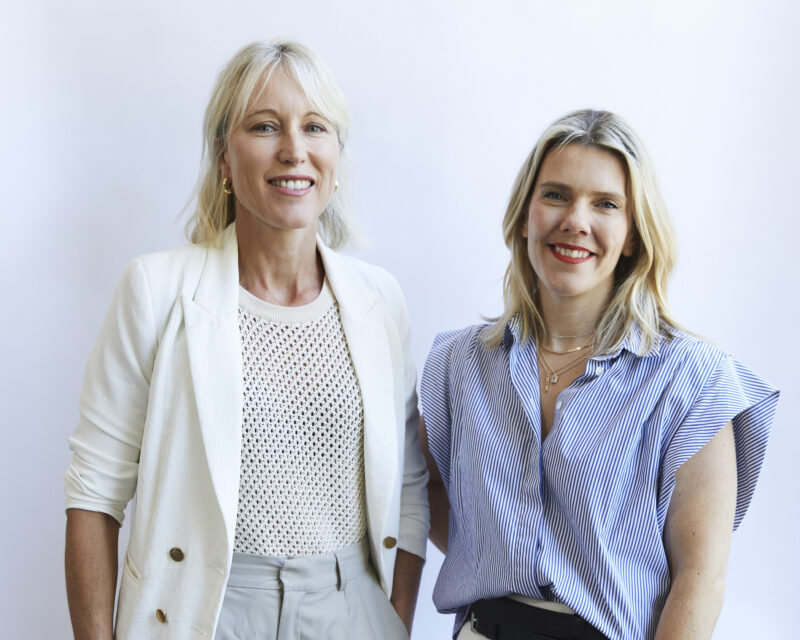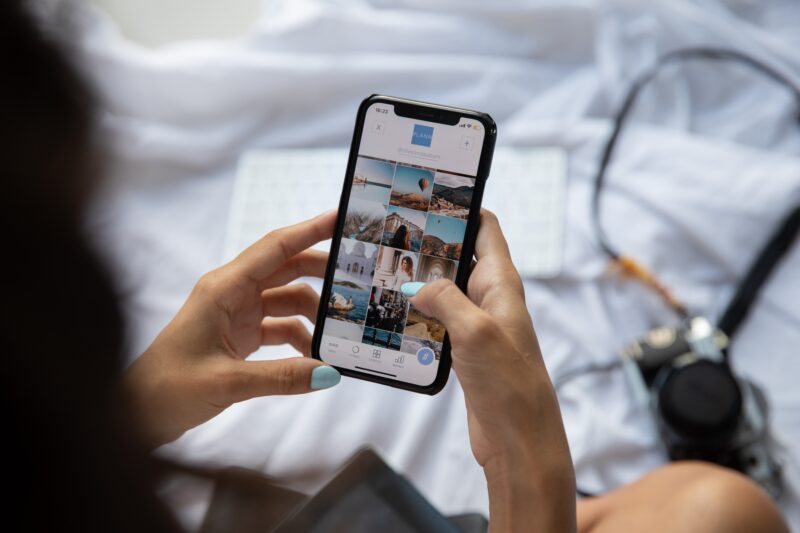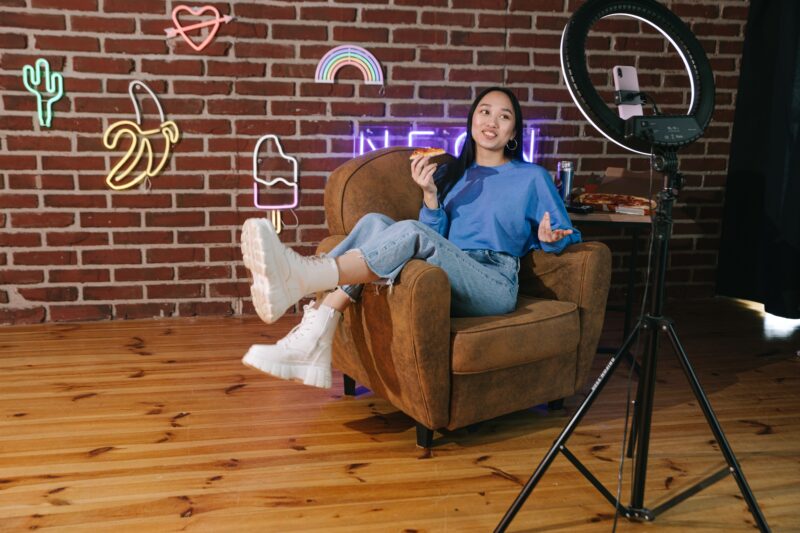How selling ‘cane toad piss’ perfected a foolproof social media influencer marketing model
One of Australia's leading social influencer agencies had its beginnings in the pre-Facebook and Instagram era, with a carton of beer and a guy named Dave from western Sydney. Almost two decades on, it still operates in a pretty similar fashion.
Back before everyone had Facebook and Twitter, and a generation prior to the launch of TikTok, a Sydney agency was quietly laying the foundations of what we now know to be influencer marketing.
And it all began with a Queensland invasion of New South Wales – and not a single internet activity.

Sharyn Smith and Katie Palmer-Rose from Social Soup.
“It was about 16 years ago,” Sharyn Smith recalled of launching Social Soup.
“I was running the research firm Polinate at the time with my now-husband. My background was in sociology and the connectedness of society. But every time we’d run research about how consumers came to find a product, it mostly came back to word-of-mouth – from friends and family.
“But everyone would put it to the side as being a recommendation that you couldn’t do anything with. I thought there was a way to develop that as a channel for marketers. That was the start of it.”
It was the birth of the business, which provides brands access to the power of ‘recommendation’. These days, it’s predominantly on social media – engaging influencers to, well, influence.
“Social media was on the horizon, but it was Friendster and forums back then – nothing at all like what we have today,” Smith said.
Social Soup uncovered, developed and deployed a community of influencers to help generate word of mouth buzz – everyday people who could unlock the power of recommendation, she explained.
“As Facebook and Instagram launched, there was the first niche ‘creator’ landscape developing, so we built that layer in. Then it got stronger. As YouTube took off and then TikTok launched, there were more and more layers to build in.”
Before the popularisation of social networks there were more offline ways of ‘influencing’ customers, predominantly via grassroots seeding campaigns.
One of those in Social Soup’s first year of operation put the agency on the map.
Getting people to drink ‘cane toad piss’
The idea of launching XXXX Gold in New South Wales, and especially in western Sydney, was an ambitious one.
But in 2008, that’s what Smith and her business partner Katie Palmer-Rose, managing director of Social Soup, were tasked with doing.
“We devised a massive influence campaign that didn’t exist online at all,” Smith said.
“It was a grassroots campaign to bring XXXX Gold into NSW – something that’s all about driving behaviour change, perception change and customer conversion.
“When you’re talking about trying to get a Queensland beer into the pubs of western Sydney, no amount of advertising is going to achieve that. You need it to be driven by consumers, from the bottom up.”
Added Palmer-Rose: “You have to remember, XXXX is described by some south of the Queensland border as ‘cane toad piss’, so we needed something much deeper than traditional advertising.”

The Top Blokes program was designed to be easily replicated in any territory.
Social researchers would be parachuted in to begin extensive profiling, starting with what Smith describes as ‘cascade interviewing’.
“It’s interviewing someone and mapping all of their social networks and connections, then interviewing those people, then mapping their networks, all to get to the most uber-connected people in an area,” she explained.
“From multiple interviews, we got to a handful of guys – we’d land on a hyper connected guy, weirdly almost always called Dave.”
Beginning in Penrith, about 45 minutes west of Sydney, there were 20 Top Blokes who were engaged on the product and made to feel a special kind of connection to it.
Legendary cricketer Alan Border came to visit. There were events. Each of the Top Blokes got a XXXX Gold card to use at their favourite pub or community club to shout their mates a beer.
The blokes threw their own events during summer – barbeques, pool parties and games of backyard cricket – where XXXX Gold was the drink of choice.
“It’s all about normalising a product and making the behaviour permissible,” Smith said. “The client saw a 40% sales uplift based on that program alone – no ad support, no other activities.”
Palmer-Rose added: “We ended up getting their whole free-to-air TV ad budget for the program. That one campaign put the agency on the map.”
New tech, same old principle
Since then, much has changed. The platforms have evolved at a rapid pace. New players have barged onto the scene.
“What was happening way back then with the XXXX Gold campaign is still very much our approach now, and that’s all about understanding your audience,” Palmer-Rose said.
“We’ve seen heaps of different businesses come and go, but they focused on a platform or a personality or a moment. If you focus on the people of influence and who they reach, the only thing that needs to change is how they’re engaged.
“We’re trying to explain that what they think when they hear ‘influence’ is not just Instagram and TikTok. It’s not about the person, it’s about the audience and the content.
“We start everything with the audience. Who are they and how do they move through the world? What do they engage with? Often, it’s a mix of things. Once you’ve got that, the influencer type naturally emerges.”

And then there’s the process of vetting.
“There are a few really key things,” Palmer-Rose said. “First, it’s having great technology to understand what that creator’s audience really is… then reviewing content to make sure they’re a good brand fit. We then look to see there’s an aesthetic fit.
“And critically, we look at the demographics of their followers.”
Again, it comes back to audience. Who does the client want to reach? Who is likely to respond to messaging about their product?
Imagine it’s some kind of fitness product. Engaging a fitspo-style woman who’s in her early 20s and has a great aesthetic seems like the logical approach… right?
“Engaging that influencer doesn’t necessarily get you that same demographic,” Palmer-Rose said. “There might be some, but often it’s teenage boys or creepy old men.”
It’s probably better engaging that influencer to promote an energy drink of video game.
While big and noisy campaigns on social media are a major focus for Social Soup, the more grassroots activity that the agency began with are still big business.
“There’s a big grassroots group we have – they’re engaged to trial products, go in store, write reviews, have occasions with their physical networks, all those great things that are super impactful. And ours is a community of 200,000 people that we tap into.”
The problem with ‘influencers’
Fast-forward to 2023 and it seems just about anyone can be an influencer.

All influencers are not created equally.
Former contestant on Married At First Sight in 2011? Tick. Highly stylised shots of a Byron Bay holiday? Sure thing. Relative of someone vaguely considered famous? Yeah, OK.
“That’s not an influencer,” Palmer-Rose laughed. “Don’t even get me started.”
Many agencies and “cowboys” come and go, charging brands a pretty penny to use ‘influencers’ of varying value to flog their products.
There’s very little strategy, a dubious measure of return on investment, and a huge amount of risk that it’ll blow up in everyone’s face. There have been countless headlines about the latter.
The problem many brands make is beginning the process with the influencer, when that should be the last thing that’s considered, Palmer-Rose said.
“Influence as a channel is valid and has great results, but there’s a stigma around it. We focus on influence, not the influencer – it’s the process.”




Have your say